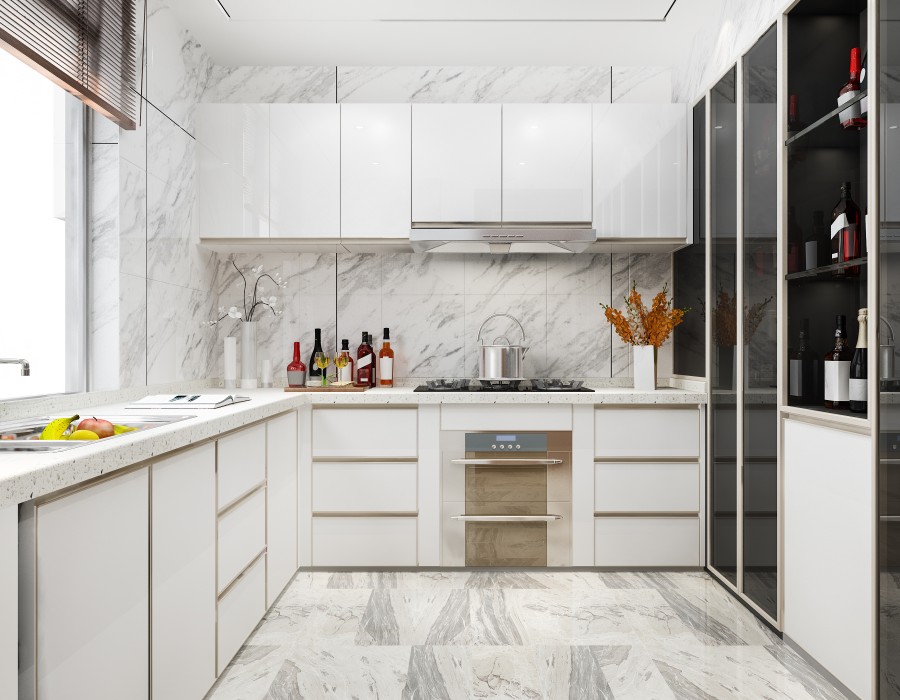When it comes to kitchen renovations, cabinets are a key component that significantly impacts both the style and functionality of your space. Investing in quality kitchen cabinets means selecting materials that not only look great but also stand the test of time. In this blog, we’ll explore six common materials used in the construction of high-quality kitchen cabinets to help you make an informed decision for your home.
1. Solid Wood
Solid wood is often regarded as the gold standard for quality kitchen cabinets. It offers unmatched durability, strength, and a timeless aesthetic. Common types of wood used in cabinets include oak, maple, cherry, and birch. Each wood type brings its own character, from the grain patterns to the natural color variations.
The primary advantage of solid wood is its longevity. It can be sanded and refinished over time to maintain its beauty, making it an excellent long-term investment. However, solid wood can be more expensive than other materials, and it is prone to expansion and contraction due to humidity changes, so proper sealing is essential.
2. Plywood
Plywood is another popular material for building quality kitchen cabinets. It is constructed from thin layers of wood veneers glued together, with the grain of each layer running in alternating directions. This gives plywood its strength and resistance to warping, making it an ideal choice for kitchen environments where moisture levels can fluctuate.
Plywood is often used for the cabinet box (the structure) rather than the doors. It offers a good balance between cost and durability, and it’s lighter than solid wood, making it easier to install. A quality plywood cabinet box can hold up well under the weight of countertops and heavy kitchen items.
3. Medium-Density Fiberboard (MDF)
MDF is an engineered wood product made from wood fibers and resin, and it is widely used in quality kitchen cabinets for its smooth surface and versatility. Unlike solid wood, MDF doesn’t have grain, so it’s perfect for cabinets that will be painted. Its smooth finish allows for a seamless look, which is why it’s frequently used for modern and contemporary kitchen designs.
MDF is less prone to warping and cracking than solid wood, which is a significant advantage in a humid kitchen environment. However, while MDF is durable, it’s not as strong as plywood or solid wood, so it’s best suited for cabinet doors and drawer fronts rather than cabinet boxes.
4. Particleboard
Particleboard is a budget-friendly material often found in low- to mid-range cabinets. It’s made from wood particles, sawdust, and resin that are pressed together. While particleboard is more affordable than solid wood or plywood, it’s not as durable, and it’s more susceptible to moisture damage.
High-quality particleboard can be used effectively in some kitchen cabinets, but it’s generally considered a lower-end option compared to plywood or MDF. If you’re looking for long-lasting quality kitchen cabinets, it may be worth investing in a more durable material.
5. Laminate
Laminate is a synthetic material that is often used as a finish for kitchen cabinet surfaces. It is applied to a substrate, such as MDF or particleboard, to give it a sleek and durable finish. Laminate cabinets are available in a wide range of colors and patterns, including designs that mimic the appearance of wood.
Laminate is easy to clean and resistant to moisture, making it a practical choice for busy kitchens. However, the quality of laminate can vary, and cheaper options may peel or chip over time. High-pressure laminates are more durable and can offer a long-lasting finish for quality kitchen cabinets.
6. Thermofoil
Thermofoil is a type of vinyl laminate that is heat-sealed onto an MDF core. It creates a smooth, seamless finish that’s available in various colors and textures, often mimicking wood or painted finishes. Thermofoil is a popular choice for modern kitchens due to its affordability and low-maintenance characteristics.
While thermofoil is moisture-resistant and easy to clean, it doesn’t hold up well to heat. Cabinets near ovens or stovetops may experience peeling or warping over time. However, for homeowners looking for a cost-effective, stylish option, thermofoil can be a viable choice.
Conclusion
Choosing the right material for your quality kitchen cabinets is a crucial step in any kitchen renovation. Solid wood, plywood, and MDF are the most durable options, each offering a unique combination of strength and aesthetic appeal. For those on a tighter budget, particleboard, laminate, and thermofoil can also provide a stylish and functional solution. By understanding the pros and cons of each material, you can select cabinets that fit both your design vision and practical needs, ensuring your kitchen looks great and performs well for years to come.





Comments